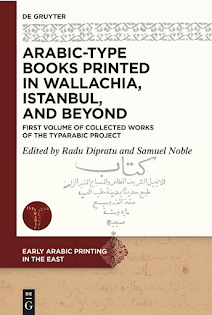Arabic original here.
The Tragedy of Contemporary Orthodoxy
In the spring 1992, a few months after the collapse of the Soviet Union, Patriarch Bartholomew invited the patriarchs and heads of autocephalous churches to a historic meeting at the patriarchal headquarters at the Phanar in Istanbul.
At that time, the Orthodox world was facing a major period of transformation: countries were leaving communist captivity for freedom, churches were being revived after decades of repression, and divisions started to come to the surface again after decades of having been frozen by the previous political regime.
At that meeting, which was held on the occasion of the Sunday of Orthodoxy, the participants expressed their shared consciousness of the magnitude of the challenges that the Church was facing in the post-communist era.
In their closing statement, they declared that "The Holy Orthodox Church throughout the world, since she abides in the world and is inevitably affected by the changes that take place there, today finds herself confronted with serious and urgent problems that she wishes to treat as a single body."
That key phrase amounted to a declaration of intent to restore the Orthodox conciliarity that brought the local churches together in unity of faith and canons on the basis of the words of the Apostle Paul: "If one member suffers, all the members suffer with it; or if one member is honored, all the members rejoice with it" (1 Corinthians 12:26).
At that time, Constantinople was not behaving as a "ruling church" with special privileges, but as a "servant of unity," working to coordinate the Orthodox body in the face of the divisions that had begun to emergy, especially with the appearance of the so-called "Kyiv Patriarchate" established by Filaret Denysenko after he failed to attain the position of patriarch of Moscow.
Those gathered at that meeting called for spiritual and canonical unity, stating that schism is no less dangerous than heresy and that "even the blood of martyrdom does not erase the sin of schism," in the words of Saint John Chrysostom.
At the start of the third millennium, Patriarch Bartholomew renewed his initiative and invited the patriarchs of the churches to another gathering of a comprehensive ecclesiastical and humanitarian character. The heads of the churches met in Bethlehem where they celebrated the Nativity service according to the Julian Calendar at the Church of the Nativity with the participation of the heads of Orthodox countries, and released a joint message entitled "The Incarnation and Nativity of Jesus Christ: A Guarantee of the Sanctification of History and the World."
That meeting was a continuation of the spirit of conciliarity that brought the Orthodox churches together in a single worldview, in which Orthodoxy offered a message of salvation to the modern era instead of being closed in on itself.
On December 26, 2000 this path was completed with a festal liturgy at the ancient cathedral of Haghia Sophia in Nicaea, where a document "to the Church and the world" was signed. It resembled a global Orthodox declaration that affirmed the unity of faith and diversity of churches at a moment when Orthodoxy appeared as a single cohesive body, despite internal disagreements.
Now that a quarter-century has passed since Nicaea 2000, Patriarch Bartholomew is once again making invitations to a new celebration on the occasion of the 1700th anniversary of the First Council of Nicaea (325 AD).
However, what was supposed to have been a general celebration of Orthodox unity has turned into a limited celebration to which only the patriarchs of the Pentarchy (Constantinople, Alexandria, Antioch and Jerusalem) were invited, with the attendance of Pope Leo XIV, representing the See of Rome, indicating the Pentarchy of patriarchs that preceded the Great Schism, based on a new classification by which Constantinople considers the local churches that obtained their autocephaly in recent decades to be canonically subject to its authority.
This change in the nature of the invitation reflects a dramatic retreat from the ecclesiastical vision that governed the previous meetings. After having previously invited all the autocephalous churches to dialogue and participation, today Constantinople limits the meeting to a narrow, symbolic group going back to a time prior to the establishment of the modern autocephalous churches which constitute the numerical majority of Orthodox in the world.
Limiting the invitation to the patriarchs of the Pentarchy can only be read as a sign of the decline of Orthodox conciliarity, the disappearance of channels of dialogue between the Orthodox churches, and an increase in the nationalistic and political character of the local churches' identities.
In this sense, Nicaea 2025 is not an extension of Nicaea 2000, but rather a break with it, since it expresses contemporary Orthodoxy's inability to come together around a single table, transforming the meeting into a symbol of division, not of unity.
In 1992, the idea of the Orthodox Church as a body capable of suffering and recovering together was born at the Phanar. In 2025, it seems that Orthodoxy's body is divided, with each member suffering alone.
The Patriarchate of Constantinople has gone from a theology of unity and conciliarity to a politics of axes and historical symbolism. Instead of being the servant of unity, it has become the instrument of division.
And so, the new meeting at Nicaea comes to embody the tragedy of contemporary Orthodoxy: churches rooted in faith but unable to come together in one body like they did a quarter-century ago.
At Nicaea 325, the Creed was born.
At Nicaea 2000, the unity of the Orthodox churches was celebrated.
As for Nicaea 2025, a new chapter is being written in the story of lost Orthodox unity.
History will inevitably judge everyone who contributed to and participated in writing this story!








No comments:
Post a Comment